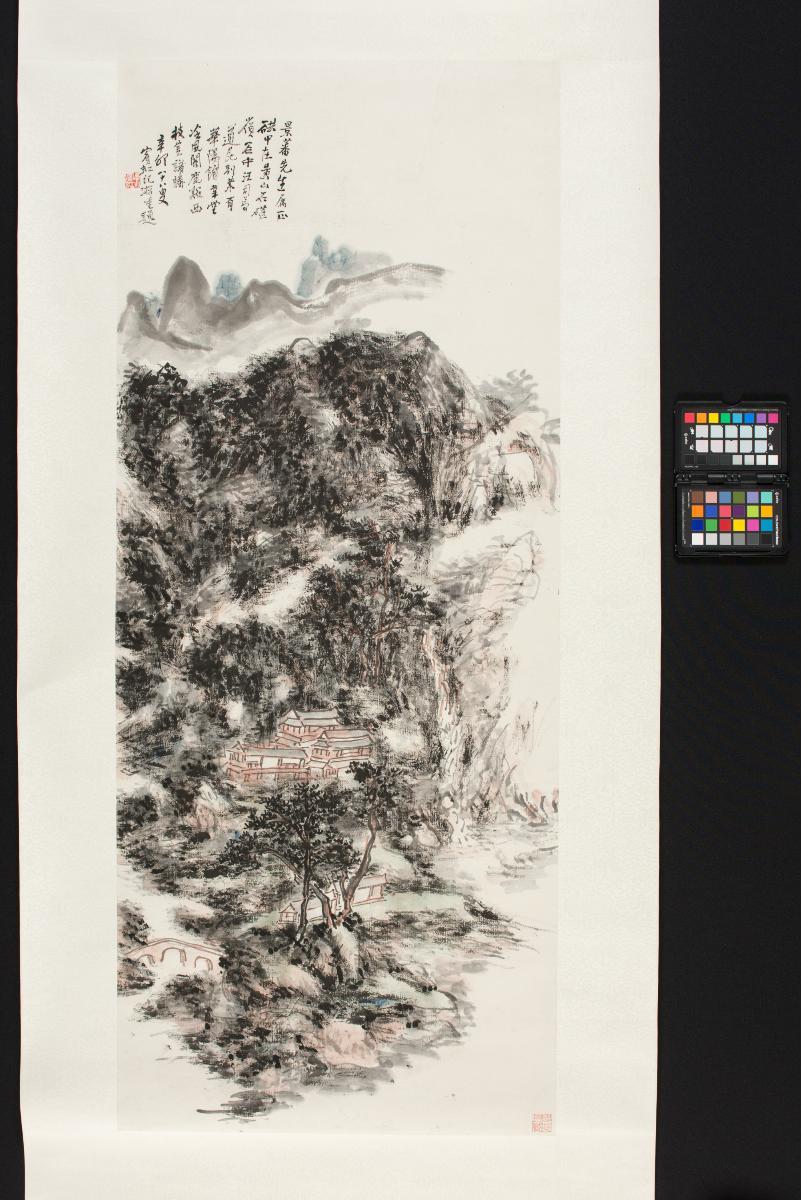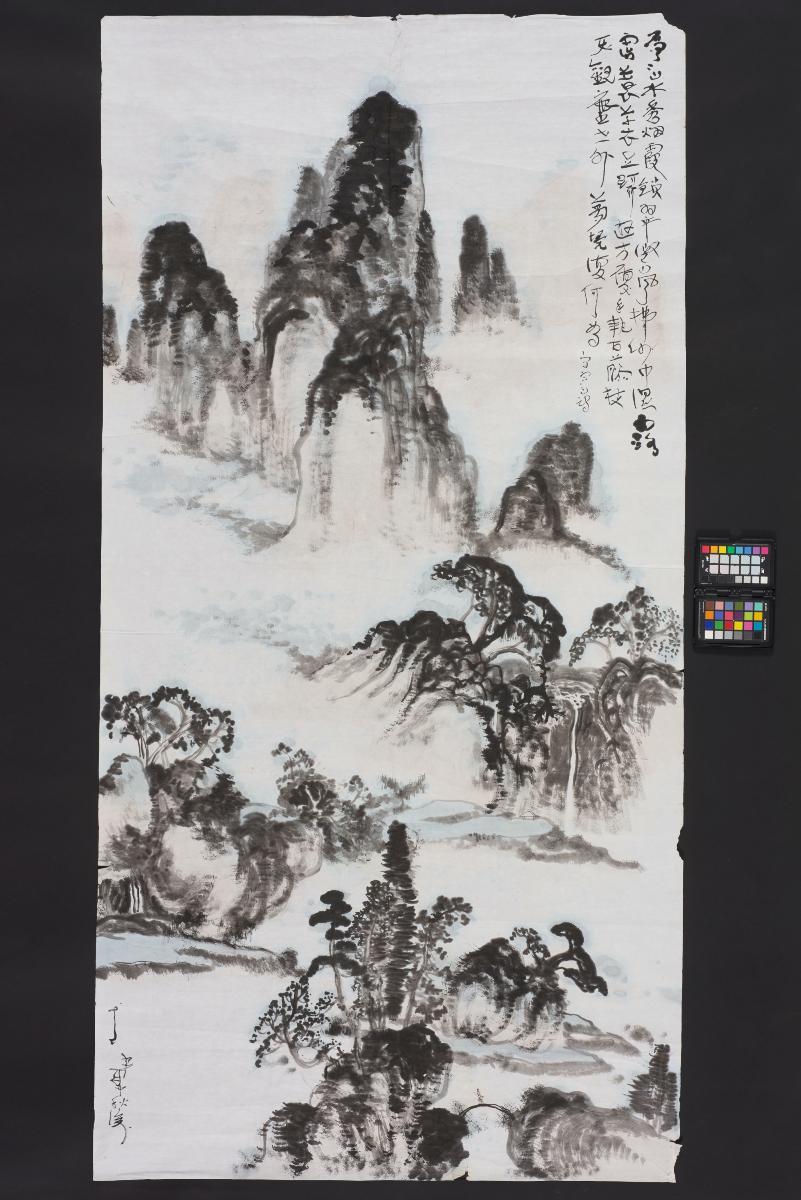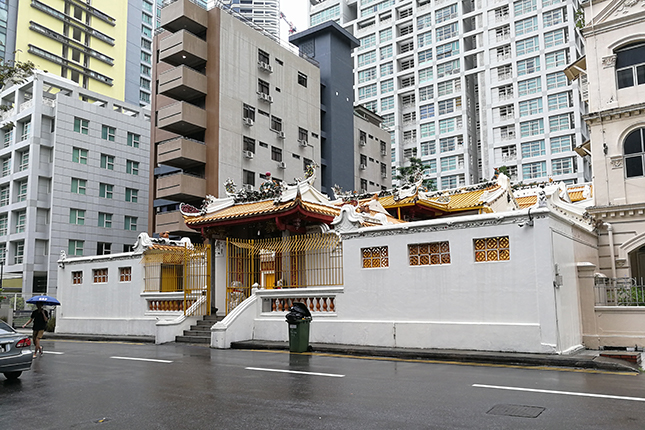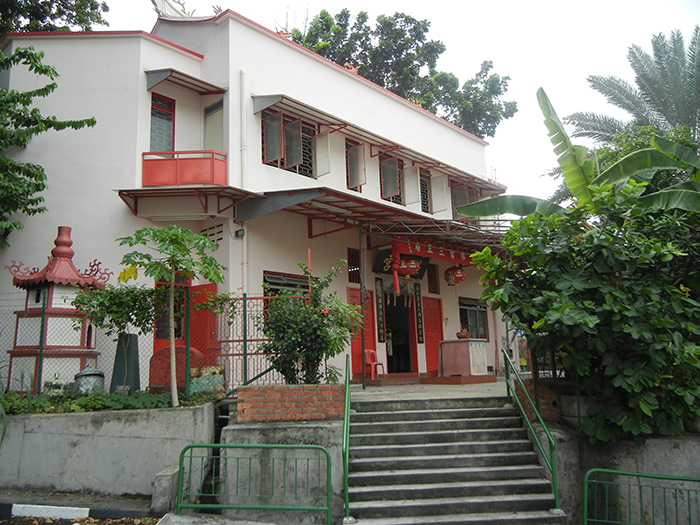Also known as Maojing, Lutai or Shishi daoren, Wang hailed from a family of scholar-officials. By the time he reached 28 in 1670, he had attained the highest degree at the national level, that of a jinshi. He was highly regarded by the Kangxi emperor who entrusted him with the mammoth tasks of compiling the 100 volumes of records on paintings and calligraphy from the imperial Peiwen Studio and composing a painting to commemorate the emperor’s birthday celebration. The Kangxi emperor had once praised Wang’s works and inscribed on his painting, “To draw so as to leave behind something (good) for later men to enjoy” (huatu liuyu renkan). Wang carved this comment onto a seal to express his gratitude for the emperor’s favour. This seal is found in this work. Although Wang declared indebtedness to Huang Gongwang in this work, there are echoes of the style of another Yuan master, Ni Zan (1301-74), a painter also frequently imitated by Wang. The sparse style of Ni and his characteristic composition consisting of a stretch of water separating a foreground of a flat land mass usually with a hut and a background of a mountain, is similar to that adopted by Wang here. However, the use of light washes of green and the combination of Huang’s moss and elongated dots have added lusciousness to the landscape, thus distinguishing it from Ni Zan’s desolate depictions.


















